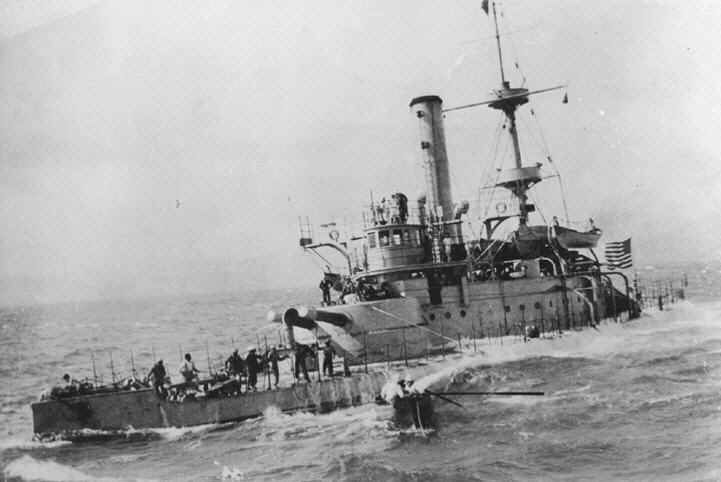|
Background note: The propellants used for most of the 19th century burned very quickly, giving the projectiles a short, sharp kick. The longer the barrel, the slower the muzzle velocity, which was due to friction after the propellant had already finished combustion. That is why heavy guns of this earlier era had such short barrels, some only 20 calibers long. The late 1800s saw the development of brown, or cocoa, powder. This burned more slowly, which allowed a longer barrel length and thus increased the muzzle velocity. However, this propellant wasted much of its energy producing thick smoke. The Mark 1 was built in two lengths, 31 calibers (Mod 0 and Mod 1) and 35 calibers (Mod 2). These were installed in pairs on the monitor Mianonomoh. The Mark 1 Mod 0 and Mod 1 consisted of A tube, jacket, 15 hoops and one locking ring. The Mark 1 Mod 2 consisted of A tube, jacket, 14 hoops and one locking ring. The Mark 2 was of simpler construction, having only 11 hoops, and was used on other monitors and USS Maine. |

Monitor Monadnock M-3 crossing the Pacific
Ocean in 1898
|
| .
|